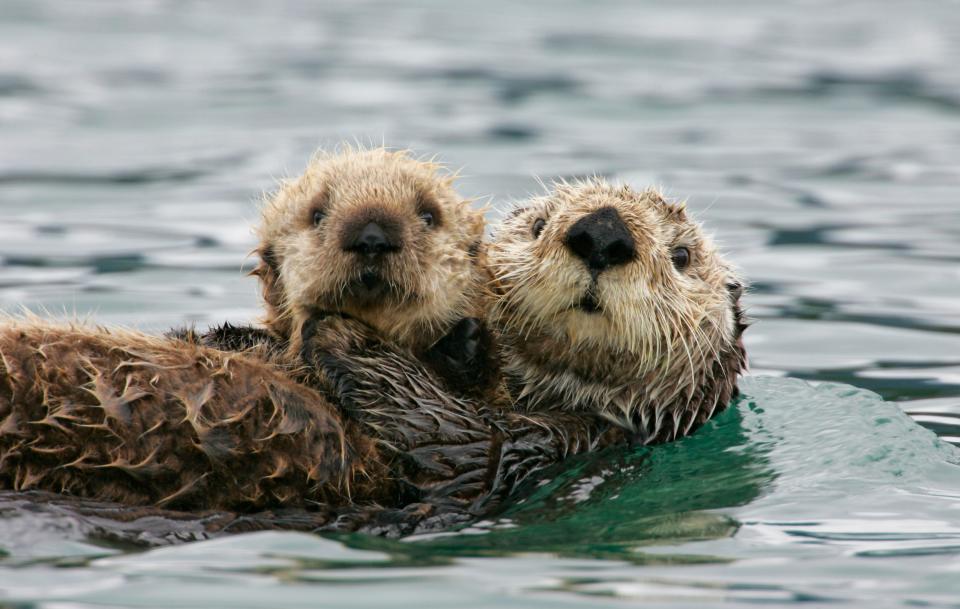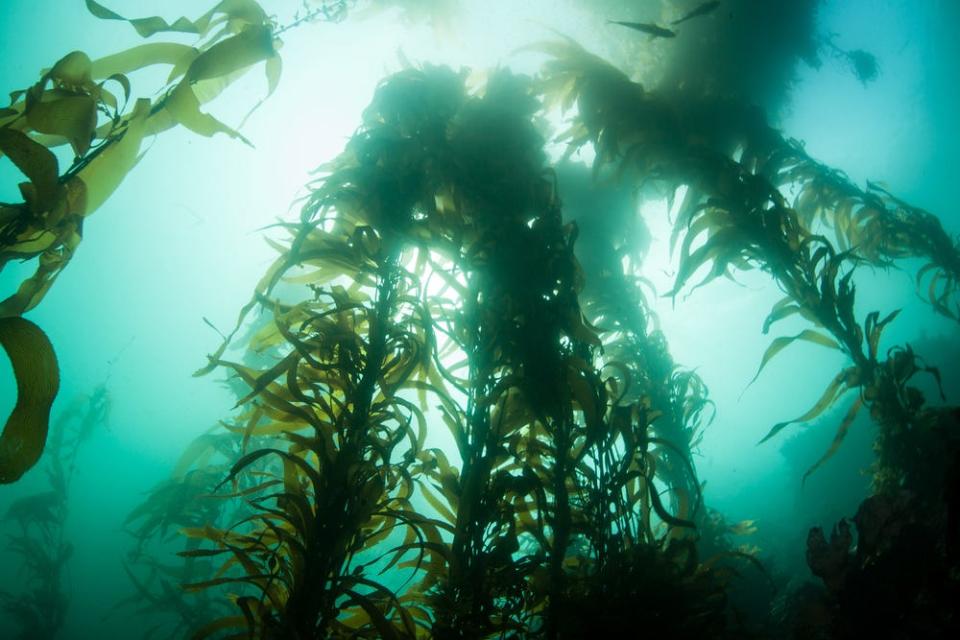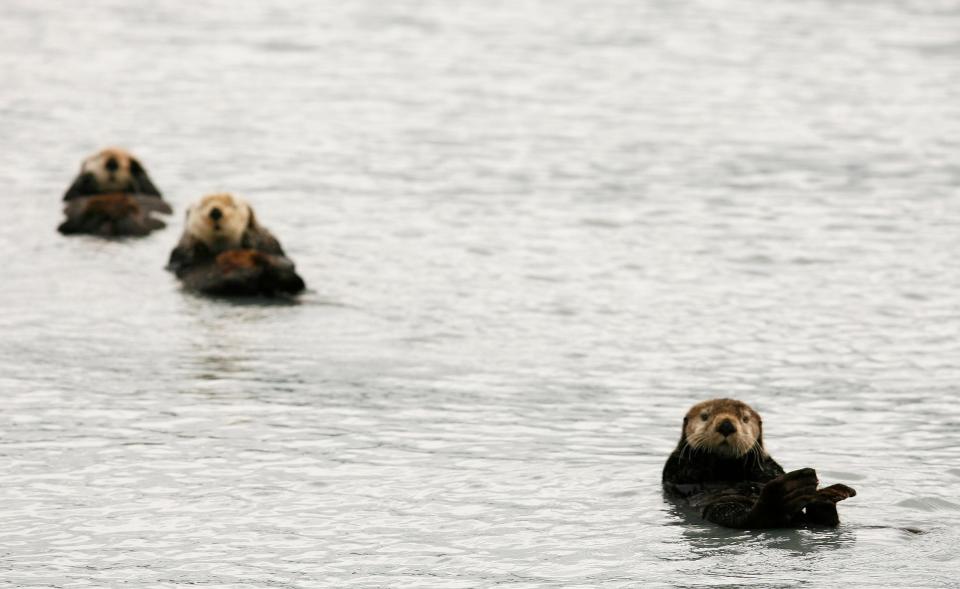-
In 1971, the US initiated its largest underground nuclear weapons test on a remote island in Alaska.
-
Previously, scientists managed to relocate hundreds of sea otters that may have been killed in the explosion.
-
Their populations thrive in Alaska, Canada and Washington, but cause some problems.
When a major earthquake shook Alaska’s Aleutian Islands in 2014, U.S. government scientists rushed to survey the damage on Amchitka Island. They were looking for leaking radiation of underground nuclear tests conducted decades earlier.
During the first half of the 20th century, the remote island had been a nature reserve until the US government converted it into a nuclear test site.
Three nuclear weapons exploded near Amchitka in the late 1960s and early 1970s, including the largest underground explosion the US has ever caused.
No people lived on the island, but the largest explosion in 1971 killed at least 900 sea otters. The Atomic Energy Commissionthe government agency responsible for nuclear research had at best predicted this 240 otters would die.
If ecologists and others had not pushed to relocate some otters before the blast, things likely would have been much worse.
“There was pressure from the state of Alaska and from environmental groups,” conservation biologist and author Joe Roman told Business Insider. “They ended up relocating hundreds of otters.”
Roman wrote about the otter move in his new book “Eat, poop, die: how animals make our world.”
Why were otters recolonized?
By the time the AEC looked at Amchitka in the 1960s, the island’s sea otter population was one of the few that had survived the near-extinction of the marine mammals a century earlier.
Their lush coats were prized as ‘soft gold’. In the 18th and 19th centuries, hunters killed about a million sea otters to sell their fur.


The population decline was alarming: from 150,000 to 300,000 in the early 18th century to about 2,000 just 200 years later. Russia, Japan, Britain and the US signed a fur treaty in 1911 to help protect the animals. In the following decades, sea otter numbers rose to about 30,000.
In 1959, the charismatic animals played the leading role in a nature film:The sea otters of AmchitkaNo one wanted to see those cute otters decimated by an underground explosion, John Vania, an otter specialist with the Alaska Department of Fish and Game, told the AEC.
Due to a combination of circumstances, many Americans, from Ohio, became more environmentally conscious in the 1960s The Cuyahoga River is constantly catching fire to Rachel Carson’s exploration of the dangers of pesticides in her book “Silent Spring” among the largest oil leak at the time in American waters, near Santa Barbara, California.
Protesters did not want a third nuclear test at Amchitka at all. In fact, the conservation group Greenpeace emerged from an organization that tried to stop the trial.
A U.S. Fish and Wildlife Service biologist, Karl Kenyon, had already been working to move some otters to areas where they lived before hunting in the 18th century. The explosions near Amchitka were a good reason to get even more active, ecologists and biologists thought.
If the AEC paid for it, Vania said, the scientists could relocate the otters.
The return of the kelp forests
In addition to funding the move, the AEC provided the scientists with an aircraft that could accommodate more than 50 otters. Over the next few years, the scientists captured more than 700 otters in nets and brought them to southeastern Alaska, Washington, Oregon and British Columbia.
Over the next fifty years, the sea otter population in many of these locations, such as Sitka, Alaska, would increase from a few dozen to hundreds or thousands. “All the sea otters – of which there are thousands – in Sitka are now descendants of these sea otters,” Roman said.
Eighty-nine otters went to British Columbia. Now there are more than 7,000. An approximate one 125,000 sea otters have been living in the Pacific since 2015.
The otters’ presence quickly changed the landscapes where they live today. Their move allowed biologist Jim Estes to study islands with and without otters. As a result, he realized that there was a connection between otters, sea urchins and kelp forests.


“If there are no sea otters, you have a lot of sea urchins,” Roman said. “If you have a lot of hedgehogs, they create what are called urchin barrens.”
The sea urchins eat the kelp fasteners, which anchor the algae. Roman compares it to cutting down a forest. The kelp eventually disappears.
One of the otters’ favorite foods is sea urchin. And they can eat a lot of it. “They have a very high metabolism,” Roman said. “They are eating machines.” When the number of sea urchins decreases, the kelp returns.
In Sitka Sound, sea otters have reduced the sea urchin population by 99%. In return, the kelp forests exploded.
“The forests provide food and shelter for more than 800 species, including sea lions, harbor seals, lingcods, gobies, moray eels, octopuses, crabs, sea anemones and brittle stars,” Roman wrote.


The kelp forests are also great at capturing carbon, a concern for the warming planet.
The otters can also affect land animals, Roman wrote, either directly, as food for wolves on Alaska’s Pleasant Island, or indirectly, with the kelp forests that attracted birds that hunt fish.
Competing with otters


Roman called the sea otter translocation one of the “most successful cases” of its kind. But he said, “You don’t really release animals like that these days.”
For starters, the US did not consult indigenous and First Nations people before releasing the otters. The mammals brought back the kelp forests, but destroyed a reliable food source for many people.
“Sea otters don’t just eat urchins,” Roman said. “They also eat geoducks and other valuable benthic animals in the area.” That includes crabs and mussels. “And of course that puts them in conflict with fishermen in that area,” he said.
Suddenly, otters appeared where they had not been for generations. “So no one remembers there were sea otters in that area,” Roman said. “They are used to harvesting these invertebrates, and they are quite abundant when there is no predator.”
Their voracious appetite is one reason why some people call otters therats of the sea.” For some Alaskans and Canadians, they are seen as a nuisance.
When otters arrived in new regions of Alaska, Washington and Oregon in the 1960s and 1970s, it was still legal to hunt them. The Marine Mammal Protection Act of 1973 changed that, although Alaskans can still hunt otters, whales and seals.
“I talked to Mike Miller, a native Sitkan,” Roman said. “He promotes this idea of some balance” between the human population and the otters.
It’s an idea echoed by researchers as well. “We wonder if there is a good place where you can have everything,” ecologist Kristy Kroeker told the BBC.
Although sea otter numbers are much greater than they were 100 years ago, the animals still are threatened. They too face challenges due to the climate crisis. And not all displaced populations survived. They disappeared from Oregon after about ten years.
But the success of sea otters elsewhere — especially their impact on kelp forests — has prompted Oregon to do so try reintroducing it them again, but this time with more caution and the input of coastal tribes.
Read the original article on Business Insider